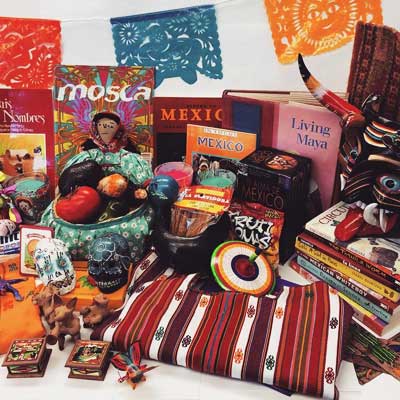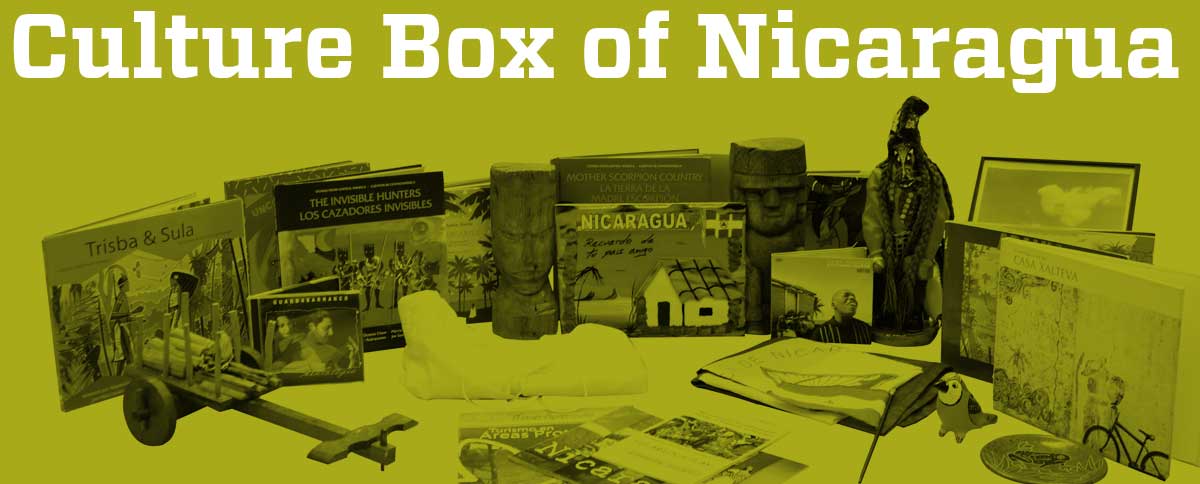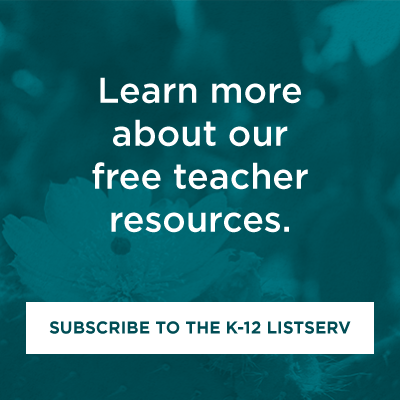Culture Boxes

In partnership with the Spanish Resource Center of Albuquerque, Instituto Cervantes of Albuquerque and the National Hispanic Cultural Center, the LAII has developed Culture Boxes to support global competency and cultural proficiency among K-12 students. These are free, physical materials available to local teachers in NM.
Please note that our Culture Boxes are only available for pick-up and cannot be mailed to teachers outside of Albuquerque, New Mexico. If you live outside of New Mexico, please consider the alternative Traveling Suitcases program run by Florida International University and a similar Culture Box program run by Tulane University, both of which can be shipped to teachers across the country.
Culture Boxes are free, traveling resources (artifacts, clothing, music, books, photos, and videos) which promote a deeper understanding of global cultures. Each box focuses on a specific country, exploring its unique characteristics. To complement and contextualize the materials in each box, graduate students at The University of New Mexico have written succinct background information about each country and thoroughly described each item.
Culture Boxes provide teachers with the material means of broadening students’ multicultural awareness and improving their global competency, also known as cultural proficiency. According to the National Education Association, global competency “refers to the acquisition of in-depth knowledge and understanding of international issues, an appreciation of and ability to learn and work with people from diverse linguistic and cultural backgrounds, proficiency in a foreign language, and skills to function productively in an interdependent world community.”
The Culture Box program helps to increase global competency among students in the following ways:
- Engage youth by bringing tangible global culture directly to the classroom;
- Increase awareness and understanding of global issues through discussion, observation, and practice;
- Expose new cultural practices and identities in order to transcend cultural differences and assumptions;
- Develop cross-cultural communication skills to better prepare students to participate in a global society; and,
- Encourage reflective responses to stereotypes and critical engagement with opposing viewpoints.
To request a Culture Box, please contact Mayte Villa of the Spanish Resource Center by phone at (505) 724-4743 or via email at spanish.resource@state.nm. By accepting a Culture Box into your classroom, you agree that you have read our Terms of Use and Guidelines (below).
Terms of Use
- Culture Boxes are free to borrow for use in K-12 classrooms and other educational settings.
- Other community organizations may check out Culture Boxes, but preference will be given to educators.
- The borrower agrees that a Culture Box will be returned in the condition in which it was received, with all items accounted for and repacked according to directions.
- The borrower agrees to complete an evaluation of the Culture Box. No new Culture Boxes will be released to the borrower until an evaluation has been completed and submitted.
- Culture Boxes may be checked out for up to one month's time. If a Culture Box is kept out for longer than one month, the borrower's ability to use the program may be revoked.
- Culture Box resources may not be used for commercial purposes. All copyrights are retained by the original authors of the materials, unless otherwise noted.
Guidelines**
While the Culture Boxes are in your care, please...
Use Cultural Sensitivity. Before delving into the contents of your Culture Box, please have your students create their own classroom cultural boxes. Ask each student to bring in one artifact that represents their culture (i.e., an artifact that speaks to who they are, what they value and what they believe). Then have each student share their artifact, i.e., name their item, who it belongs to, how old it is, why the artifact is special and how their artifact represents their culture. Upon sharing their artifacts, students should then display all their artifacts on one table. Have each student take out a piece of paper and answer the following questions: 1) Is there an item on the table that you feel does not reflect your culture? Why? 2) Is there an artifact that you think is missing from the table? What would it be and why?
Once the students take their time to fully complete these two questions, have them share their responses. During this discussion process, have them also answer these questions 1) Do you think one’s entire culture - from one country or from one region of a country - can be represented with one box of artifacts? Why or why not? 2) Now do you think you can get a small insight into one’s culture through a box of artifacts? Why or why not? Through this discussion, students should recognize the diversity within their culture and at times see items on ‘their’ table that may not reflect who they are.
This is a valuable lesson and should be used as they begin the exploration of other cultural boxes because, as they can see from this exercise, culture is complex. It does not fit neatly into a defined box. Most importantly, students should be careful of using these boxes to stereotype groups of people—rather, students should use these boxes to celebrate the commonalities and similarities between groups of people.
Invite Guest Speakers. Our boxes are meant to be a catalyst for further exploration, which should include the opportunity to actually meet people from diverse backgrounds and hear their stories. Simply email the program coordinator at cultureboxes@gmail.com and we can help you make arrangements for a guest speaker.
Handle with Care. Many people have lovingly contributed to the evolution of our Culture Boxes. We ask that you share in our appreciation of their time by teaching your students to handle the enclosed materials respectfully. Have your students take turns being a curator for your display, giving them responsibility for these treasures from around the world. Adult supervision is required with elementary age children!
Repack the Culture Box as You Found It.Return each item to the box and make sure that it correlates to the inventory list found in this packet. If by chance something is missing, broken, or lost, please let us know. And, finally, please share with us your experience with the box by filling out the evaluation form you'll find inside each packet at the end. We would love to know how you used the items in the box and how your students responded to these materials.
*These terms of use are adapted from the Traveling Trunk policies of the Kellogg Institute for International Study.
**These guidelines are taken from the Culture Discovery Box guidelines developed by the Center for Latin American and Caribbean Studies at Duke University.
To download the guide to each Culture Box and preview its contents, click on the appropriate image below.




